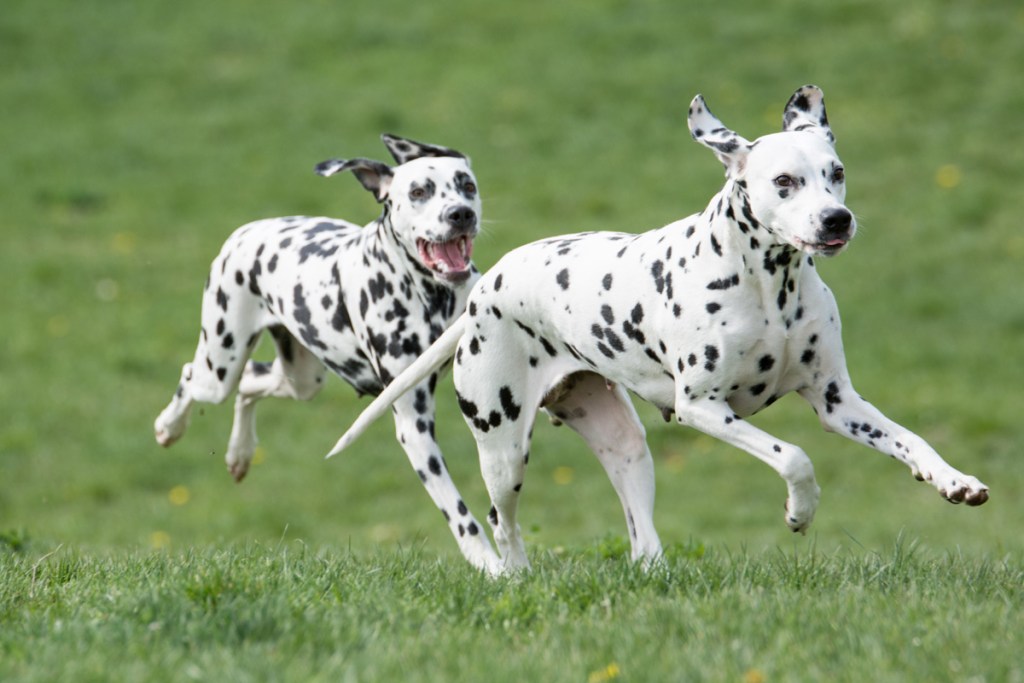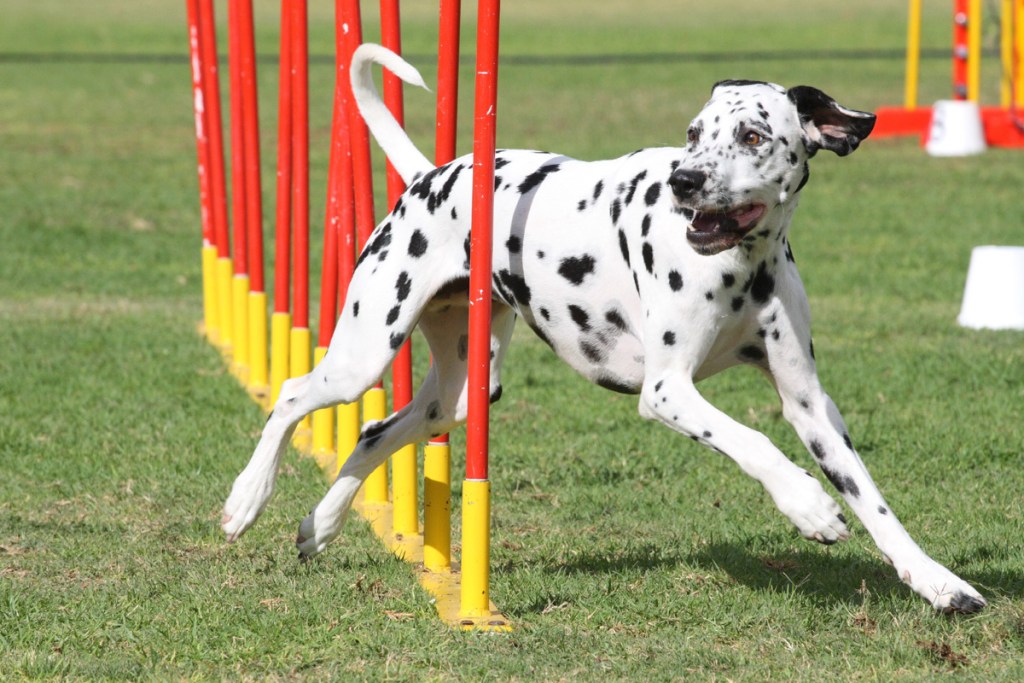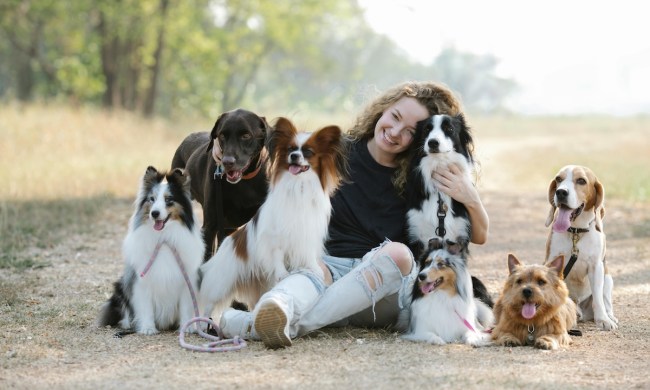You may have to guess at the breed of many dogs walking around your neighborhood, but there’s no mistaking the distinctive spotted coat of the Dalmatian. Also known as Dals, this breed has some mystery surrounding it, with different researchers claiming that the spotted dogs first appeared in such regions as the British Isles, North Africa, and Asia. What is certain, though, is that by the early 1800s, Dalmatians were found in Dalmatia, a coastal region in Croatia. Outgoing, friendly, and athletic, Dals make great family pets in a household with well-behaved children and when given the correct training. However, there are some common misconceptions about Dalmatian characteristics. Following are three myths that many people believe about the breed along with Dalmatian facts about these wonderful dogs.
Myth: Dalmatian puppies are born with their spots
Fact: Newborn Dal puppies have spot-free white coats. Typically, the spots begin to appear within 10 days and continue showing up and getting darker until about 18 months of age. While Dals will have most of their coloring by this time, breed experts say that new spots can appear throughout their lives. A Dal’s spots can be black or liver colored, with the liver color being less common, according to the Dalmatian Club of America (DCA).
According to the American Kennel Club (AKC), just as no two people have the same fingerprints, no two Dalmatians have the same pattern of spots. When it comes to the show ring, the number of spots a Dalmatian has isn’t as important as how evenly they are distributed. The AKC breed standard describes the ideal spots as ranging in size from a dime to a half-dollar. However, while a heavily marked or sparsely marked Dalmatian may not be a champion in the show ring, they certainly are winners in the hearts of many households throughout the U.S.

Myth: Dalmatians were bred to be deaf so they could work in firehouses
Fact: According to the Universities Federation for Animal Welfare (UFAW), approximately 30% of Dalmatians in the U.S. suffer from hearing loss. Of these, about 8% are bilaterally deaf (both ears), while 22% are deaf in one ear. Scientists at the UFAW say that Dals are usually born with normal hearing, but some become deaf or hearing impaired after a few weeks. To prevent the problem, veterinary experts say that all Dals should be tested for hearing loss and only those in which both ears are normal should be used for breeding.
While Dalmatians are often referred to as firehouse dogs, that’s just one of the many roles they’ve served. According to the AKC, one of their earliest jobs was traveling with bands of itinerant Romani peoples (sometimes called gypsies). In England, they ran alongside carriages and horseback riders to protect them from the dangers of the road, including attacks by highwaymen. They were invaluable to firehouses, running in front of the horse-drawn fire engines clearing the roads of pedestrians and protecting the horses from stray dogs. At the scene of the fire, these amazing dogs helped keep the horses calm.
Dals have also been used to retrieve birds, hunt boars, catch rats, and even traveled with the circus performing tricks. Today, they are kept as loving family pets and also serve as mascots at many firehouses. They stay connected to their carriage-dog roots by competing in coaching trials and traveling around the U.S. with the Budweiser Clydesdale horse teams.
Myth: Dalmatians are impossible to train
Fact: This is not true, but as with any dog breed, training takes time, patience, and consistency. Dals are certainly not a breed to be purchased on an impulse as they need experienced owners. And because deaf or hearing-impaired Dals can startle easily, they are not a great match in a home with young children.
Because Dalmatians are basically a guard dog breed, they need to be raised with firmness and discipline, say DCA experts. These dogs can have a stubborn streak and are happy to take charge if pet parents don’t take the lead. Dals should be enrolled in basic obedience classes and taught the rules of the household from the beginning. With positive reinforcement training techniques and consistency, they quickly learn to be excellent canine citizens, according to the DCA.
It’s important to expose Dalmatian puppies to as many new and positive experiences as early as possible, say AKC experts. A puppy who learns not to be fearful of new places and people will develop into a well-adjusted adult. Exercise goes hand in hand with training when it comes to having a healthy and happy Dalmatian. A walk around the block isn’t enough for these dogs. They are high energy and make wonderful jogging, biking, or hiking buddies. With their stamina and athletic abilities, they also excel at canine sports such as agility, fly ball, tracking, and Rally obedience.

Before adding any new dog to the family, it’s essential to do lots of research so you can choose a breed that best suits your lifestyle. If you plan on purchasing a purebred dog only, speak with a reputable breeder. Before choosing a Dalmatian pup, DCA experts say, pet parents need to ask the breeder for Canine Health Information Center numbers for both the pup’s parents proving that they were screened and found free of certain genetic disorders including deafness. By connecting with breed experts and trainers and following their advice, you and your new friend can have years of fun together.



